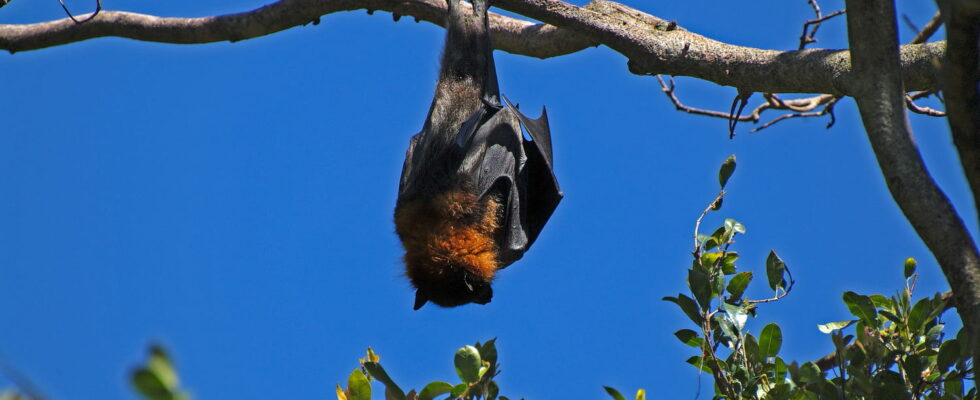There are a lot of misconceptions around bats. Very few people really know why they sleep their heads down.
During your night journeys, you have probably already met a bat, this fluffy animal with huge wings and the singular cry … But have you ever wondered how she managed to sleep so long, suspended by the legs? And without ever letting go! This behavior, inherent in the species, actually results from millions of years of evolution.
First, these mammals have not always been predisposed to fly. To find the origin of this capacity, you have to be interested in one of the ancestors of these creatures: OnychonyCteris Finneyi. This barbaric name refers to a distant parent of the bat, characterized by slender limbs and long fingers. Their rather short wings suggest a mode of flight alternating between shift and floating, quite rare today. This detail probably demonstrates that “evolving from terrestrial mammals to theft, bats began by hovering, like flying squirrels”, explainede Tara Hohoff, biologist specializing in bats, Live science.

A decisive capacity to sleep with your head upside down without risk. This position is indeed a avoidance strategy in the face of preparers who live for the ground, explains Julie Marmet, chiropterologist at the National Museum of Natural History (MNHN) in Release. If a predator appears during the day, they can drop, without the risk of crashing on the ground.
Another reason: their body is conditioned to adopt this posture. Unlike man, their blood does not stagnate at the head and even at rest, these chiropts are able to slow down their heart rate. Once suspended by the legs, the bat does not spend any energy. Because the weight of his body draws on the tendons connected to the claws, “which then switch like a stopping notch and block in condition of automatic hooking, explains Laurent Arthur, specialist at the Museum of Bourges to Science & Life. Suddenly, they do not fall when they sleep or hibernate … or even when they die! “
But there is a family of bats which is not familiar with the downstairs rest system, according to the scientific magazine: the molossids. It is not uncommon to find it horizontally under the roofs or folded in cracks. Be careful however, these unexpected positions can sometimes be a sign of poor health, reports Science & Life.
